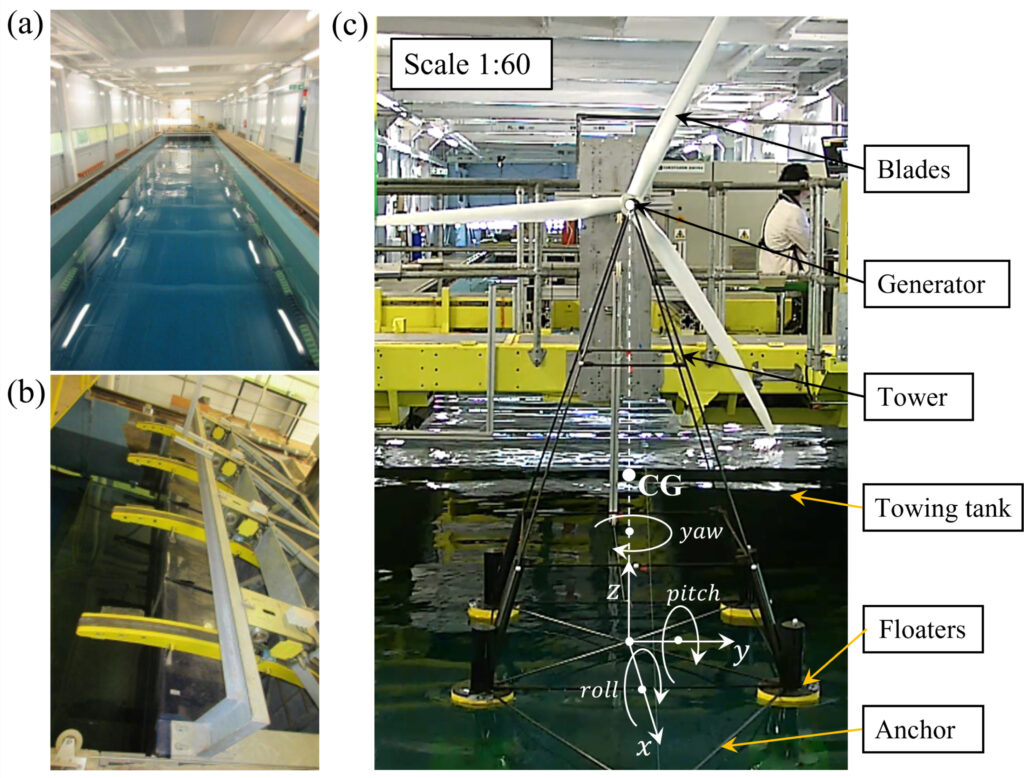
(a) Towing tank tests at the Kelvin Hydrodynamics Laboratory. (b) Wavemaker paddles for wave frequency and amplitude generation. (c) Experimental test rig of novel floating wind turbine designed by T-Omega Wind in a towing tank showing its main components.
News
A new paper analyses how a novel lightweight Floating Offshore Wind Turbine (FOWT) being developed by T-Omega Wind responds in various wave conditions, using both the advanced marine simulator at the NDC, and the longest towing tank in Scotland at the Kelvin Hydrodynamic Laboratory (KHL).
The shallow-draft spread-base turbine concept features a lightweight structure of approximately 80% less steel than a conventional semi-submersible FOWT and is economical in a wider range of depths. Notably, it is designed as a system for easier erection, launch, and maintenance, without major port investment. The study used KHL wave tank results to calibrate NDC simulations, then demonstrated appropriate performance of the prototype design for the wave heights and periods found at UK coasts. Future simulation will efficiently optimize ocean performance, and also will assist in developing the all-important launch and maintenance procedures.
The NDC model and simulations were validated with experimental tests performed on a 1:60 prototype by the KHL, University of Strathclyde. This work represents the first tangible outcome of the partnership between NDC and KHL: validating the state-of-the-art simulator against high-precision physical experiments at KHL. Stay tuned for more in-depth and innovative collaboration by combining the two state-of-the-art facilities.
Congratulations on the publication to Alicia Terrero-Gonzalez, Saishuai Dai, Richard Neilson, Jim Papadopoulos and Marcin Kapitaniak.
Read more here: https://www.sciencedirect.com/science/article/pii/S0960148124005196?via%3Dihub#bib1
Notes for Editors
| Published | Monday April 29th, 2024 |
